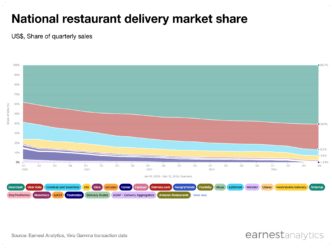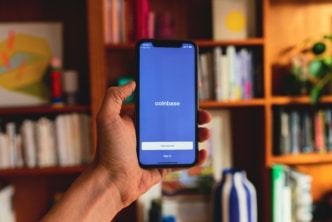Shake Shack and Grubhub Shack up
Shake Shack’s third-quarter sales sagged following the announcement of an exclusive delivery partnership with Grubhub. This consolidation is part of Shake Shack’s larger shift in focus from growing new markets to reinforcing established ones, but in the process the burger chain may have cost itself some customers. Earnest looked at both regional and national spending trends to get a better sense of Shake Shack’s losses.
Grubhub’s Edge in NYC
New York is easily Shake Shack’s most established region. Though officially founded in 2004, the company began in 2001 as a single hot dog cart in Madison Square Park, and its headquarters remain in Manhattan today. Earnest data shows that in New York, Grubhub has a much higher customer overlap than do other third party delivery companies. More than 45% of Shake Shack customers use Grubhub, while only a little over 20% use Uber Eats, the next most popular delivery service. In the year sampled, the average amount spent per customer on Grubhub is more than double the amount spent on Uber Eats.

DoorDash Preferred Outside NYC
If New York were the only market to consider, Grubhub would be the obvious choice as a delivery partner. However, outside the five boroughs, Grubhub’s advantage disappears. According to Earnest, DoorDash has the nationwide lead in terms of customer overlap, albeit a smaller one.

Additionally, Earnest has found that when comparing the habits of Shake Shack customers and non-Shake Shack customers, Postmates is favored over Grubhub. Nationally, Shake Shack customers spend more than three times what the average person does on Postmates, again narrowly beating out Grubhub.

Will Customers Get on Board?
In order for Shake Shack’s strategy to pay off, customers outside New York will have to change their habits. As company CEO Randy Garutti has said, they are used to finding the brand on many major third party delivery platforms, and he anticipates that much work remains to be done in order to complete the transition. In the QSR category, the battle for what to order has become the battle of how to order.











